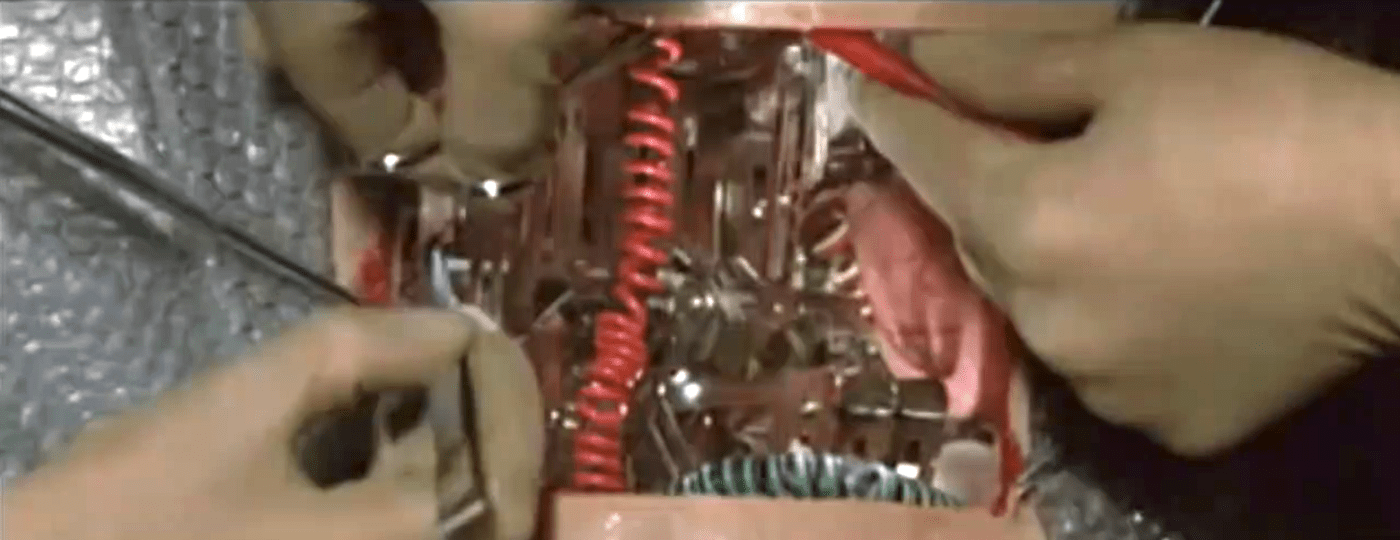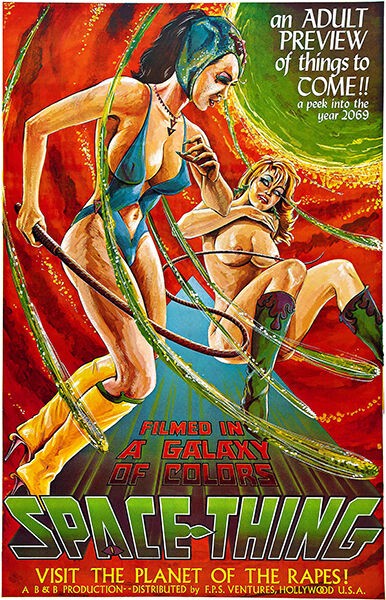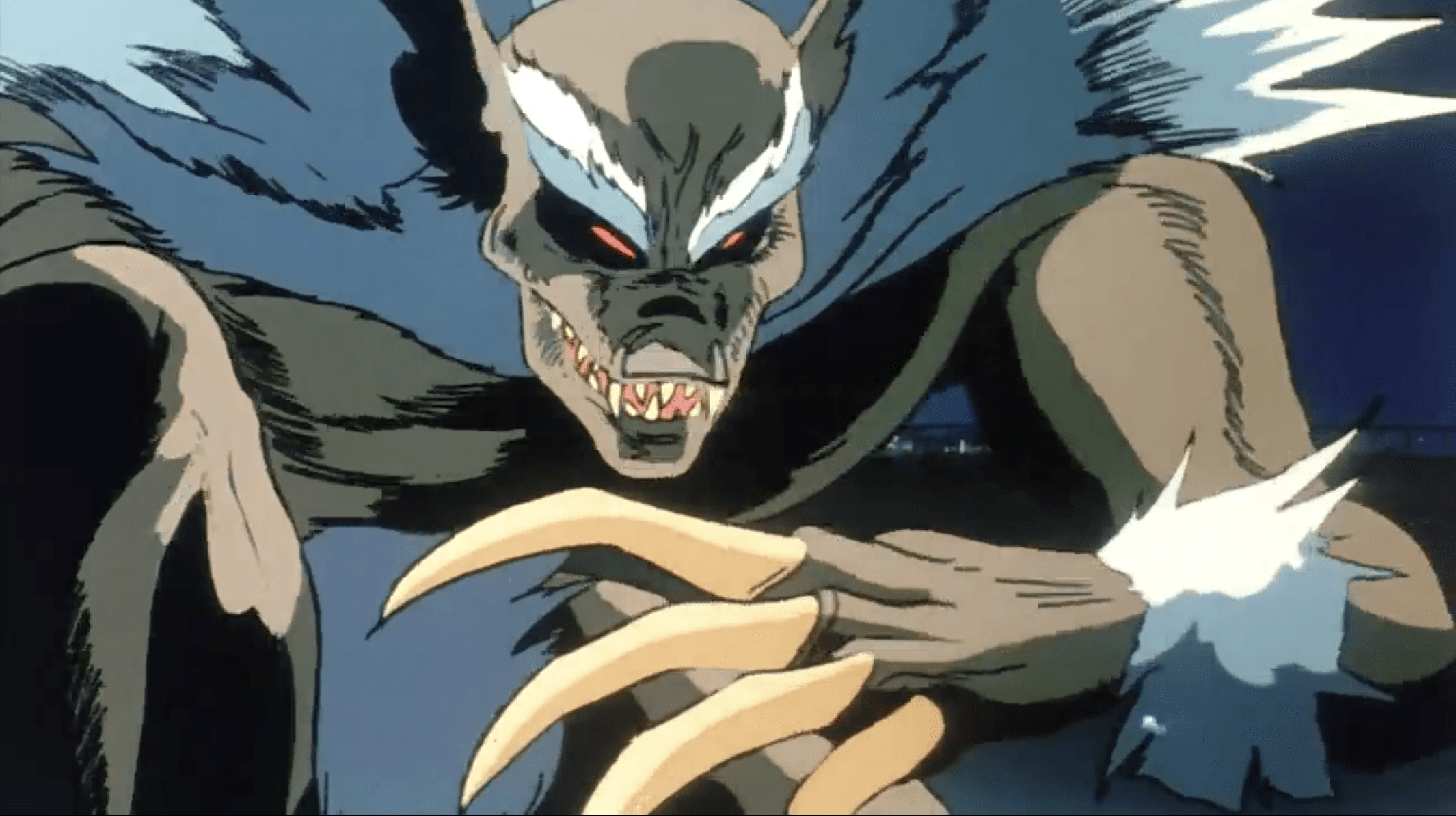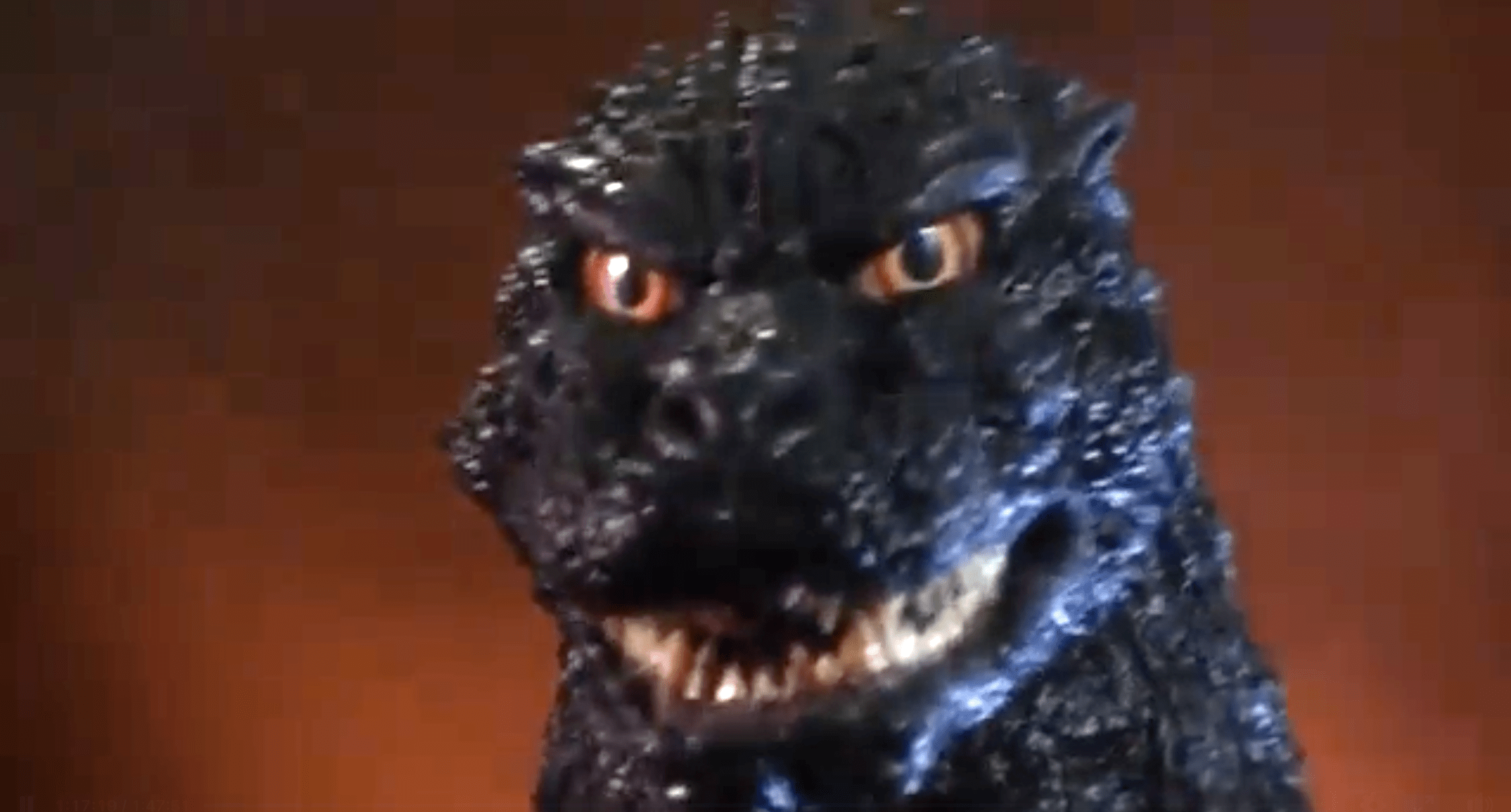
The legacy of Godzilla began in 1954. The history of this still ongoing franchise has been divided into a variety of eras the first of which is referred to as the Showa period. Revenge of Mechagodzilla is the 15th and last film in this pioneering era. It was also the last film that Ishiro Honda directed for the series. It was released in 1975.
When Godzilla first appeared on screen he was a potent symbol of the atomic bomb, America, and the atomic age. Over time he changed, just as Japan’s relationship to America and the world changed, Godzilla remained frightening but he also became somewhat friendly. Every few years he seemed to have different motivations. Now, after 15 movies and 21 years it is no longer clear what Godzilla or his movies are about.
Japan has a long history of mythological or supernatural figures who appear when a terrible injustice has occurred. Godzilla certainly fits this mold, but he has oscillated between foe and friend, As a monster he has an uneasy relationship with Japan. Sometimes he seems to destroy it in order to save it. However as a symbol for Japan, he is a pop icon and a promotional advocate for his country of origin.
Revenge of Mechagodzilla is the second appearance of Mechagodzilla in the series. He is a giant incarnation of technophobia and represents Japan’s anxiety over its future. This was once Godzilla’s role. Godzilla was the terrifying result of the mishandling of nuclear power, but now when Godzilla is seen in opposition to Mechagodzilla Godzilla is positioned as the old guard. An advocate of tradition and the past.
Mechagodzilla is a weapon employed by space aliens bent on domination. The aliens provide an opportunity to criticize contemporary Japan. The dialogue is clumsy and simplistic but it clearly illustrates the ideology driving the film.

Alien One: “Captain I’ve been waiting for you, tell me did you have a good trip”
Alien Two: “I’m exhausted, airplane plane flights are terrible one hour is worse than 1000 in space travel but I suppose that it is necessary for the project.”
Alien One: “You’re correct. Be patient. We must use the right time to exert our power on Tokyo”
Alien Two: “Yes captain, Tokyo will do. As an earthling city it’s typified by its pollution and confusion. In spite of their attempts to control it the earthlings don’t know what to do. They’re so ignorant”
Alien One: “And After it's destroyed we can rebuild Tokyo to suit our convenience.”
Running along side the alien invasion plot there is a subplot that follows a young woman as she is slowly transformed into a cyborg. The aliens operate on her several time in order to ingratiate themselves to her father, an earth scientist. Each time they operate they save her life but they also increase her connection to Mechagodzilla until she becomes a sort of living remote control.

During the operation scenes the audience is treated to a long shot of her innards which are a comical assembly of mechanical looking things including a pair of spiral phone chords and a balloon that inflates and deflates for some reason.
America’s technophobic movie craze wouldn’t emerge until the 1980’s with films like Saturn 3 (1980), Terminator (1984), and RoboCop (1987). Japan was simply mechanizing faster than the west, and so reached the phobic stage earlier. After World War Two when America tried to rebuild Japan in its own image Japan enthusiastically swallowed the ideology of capitalism and industrialization and ran with it. The tiny island became a center for production of electronics, cars and all things mechanical.
Godzilla is still an active franchise to this day. Japan still periodically revisits the monster. After the end of the Showa period Godzilla shed his friendly relationship to Japan and returned to his original role as aggressive invader. Eventually America licensed him to make Hollywood films where he attacked New York City instead of Tokyo. It’s not clear what sort of symbolism Godzilla engenders when he is tearing up time Square, perhaps it’s some sort of twisted Pygmalion, but after 9/11 there were two more Godzilla movies both of which were inevitably associated with attacks on the World Trade Center
Godzilla is now almost universally recognized. You can buy toy figures, snow globes, coffee mugs even an imitation of Van Gough’s Starry Night featuring Godzilla destroying the French countryside. It seems like everyone wants a chance to be destroyed. Each new context, each new recontextualization puts a different spin on the ever spinning identity of the monster. Now there are Godzilla face masks to protect you from Covid 19. Perhaps Godzilla can shed his national allegiances and save the entire world by wrestling a giant spherical, rubber version of the virus.

Godzilla may be an ever changing reference point but he is not a blank slate, he is a destroyer. What he destroys, and for what reason, changes but like the Hindu god Shiva he has set relationship to the world around him. In the case of Shiva, his third eye will burn anything it beholds. The third eye is the eye of truth and what it destroys is illusion. Shiva the Destroyer is an intimidating title but he is benevolent, sometimes. Indian gods tend to house their own opposites. Destruction is an integral part of creation.
Godzilla is a cinematic illusion meant to reveal an ever changing reality. His relationship with Japan mirrors Japan’s relationship to the outside world. Even while he defends Japan from interlopers he often destroys Tokyo in the process. As a destroyer Godzilla can be friend or foe simultaneously depending on who or what he is destroying. Shiva is the same, and even with The God of Abraham we are instructed to both fear him and love him. He is vengeful and wrathful but is also all forgiving and and merciful.
The salient feature of all of these figures is humanity’s lack of control over them. If they represent anything they represent the limits of our power and our fear of chaos. We create these fearful beings to focus our anxieties and give them form. An unnamed fear is far more frightening than a man in a rubber suit.

If you enjoyed this article click here for more
www.filmofileshideout.com/archives/godzilla-vs-hedora-not-your-typical-kaiju-fare




[…] If you enjoyed this article click here for morewww.filmofileshideout.com/archives/revenge-of-mechagodzilla-thoughts-on-kaiju-symbolism […]